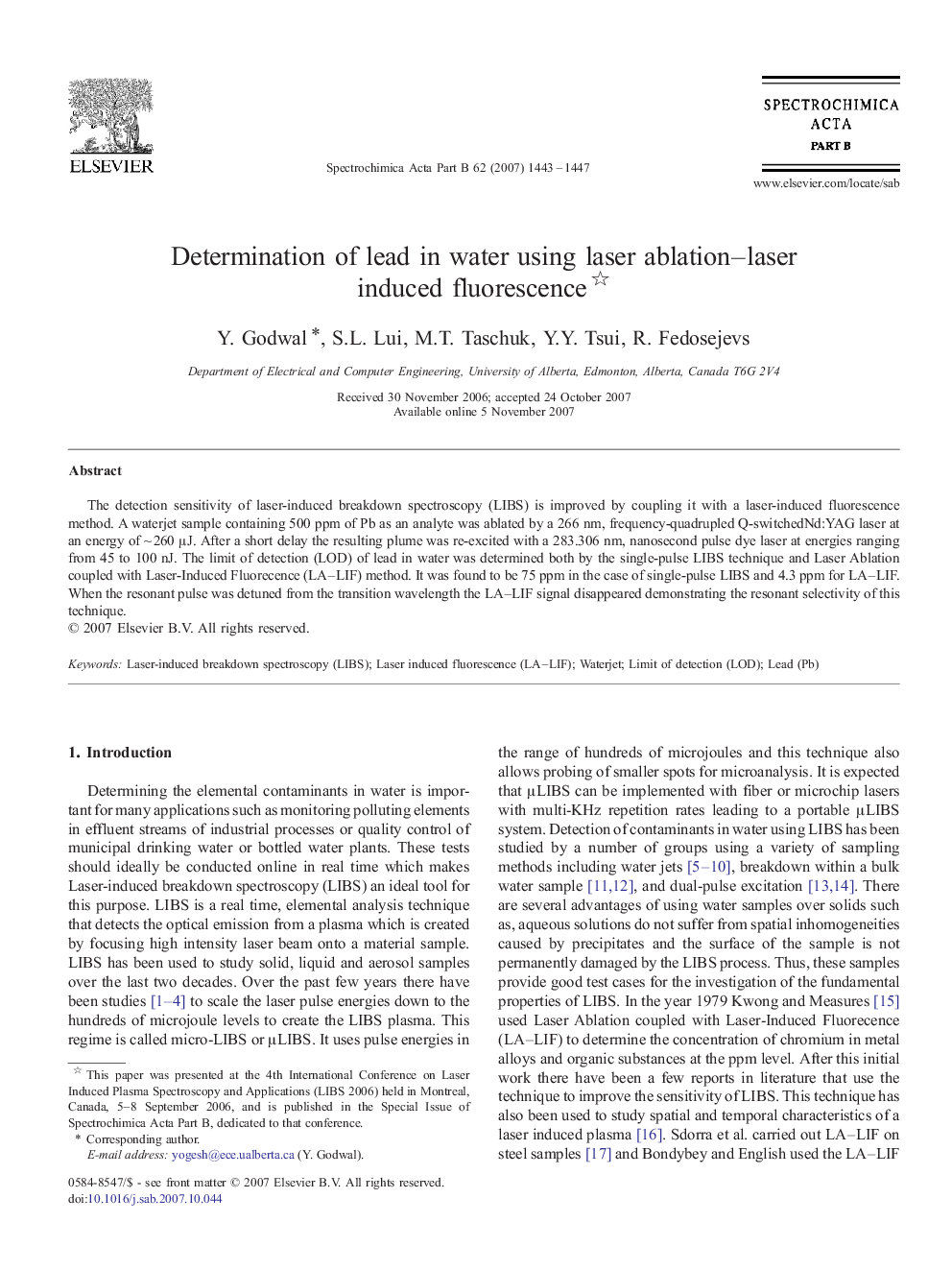| کد مقاله | کد نشریه | سال انتشار | مقاله انگلیسی | نسخه تمام متن |
|---|---|---|---|---|
| 1241334 | 969182 | 2007 | 5 صفحه PDF | دانلود رایگان |

The detection sensitivity of laser-induced breakdown spectroscopy (LIBS) is improved by coupling it with a laser-induced fluorescence method. A waterjet sample containing 500 ppm of Pb as an analyte was ablated by a 266 nm, frequency-quadrupled Q-switchedNd:YAG laser at an energy of ~ 260 μJ. After a short delay the resulting plume was re-excited with a 283.306 nm, nanosecond pulse dye laser at energies ranging from 45 to 100 nJ. The limit of detection (LOD) of lead in water was determined both by the single-pulse LIBS technique and Laser Ablation coupled with Laser-Induced Fluorecence (LA–LIF) method. It was found to be 75 ppm in the case of single-pulse LIBS and 4.3 ppm for LA–LIF. When the resonant pulse was detuned from the transition wavelength the LA–LIF signal disappeared demonstrating the resonant selectivity of this technique.
Journal: Spectrochimica Acta Part B: Atomic Spectroscopy - Volume 62, Issue 12, December 2007, Pages 1443–1447